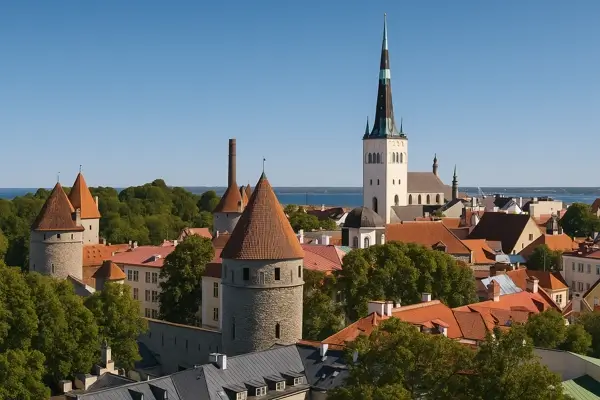
Land of 1,500 Islands
Estonia is known for its many islands, with over 1,500 scattered throughout the Baltic Sea. Notable islands include Saaremaa and Hiiumaa, famed for their natural beauty and historic sites.
Digital Nation
One of the world’s most digitally advanced countries, Estonia boasts an e-government and digital identity system that allows citizens to access almost all government services online, including voting.
Home to the First National E-Vote
In 2005, Estonia became the first country to introduce internet voting (e-voting) in national elections, enabling citizens to securely vote via computers or smartphones.
A Nation of Forests
About half of Estonia’s land is covered by forests, making it one of the most forested countries in Europe. These forests support diverse wildlife and hold cultural significance.
Estonia’s Tallest Building
The Tallinn TV Tower, standing at 314 meters (1,030 feet), is the country’s tallest structure. It offers panoramic views and hosts a museum dedicated to Estonia’s technological advancements.
A Unique Language
Estonian belongs to the Finno-Ugric family, closely related to Finnish, but is distinct from most European Indo-European languages. It’s one of the few non-Indo-European languages in Europe.
Estonia’s Independence
Estonia first declared independence in 1918, endured occupation by the Soviet Union and Nazi Germany, and regained independence in 1991 after the Soviet collapse. Today, it is a proud member of the EU and NATO.
Tallinn's Medieval Old Town
Tallinn’s Old Town is among Europe’s best-preserved medieval cities and a UNESCO World Heritage Site. Its cobblestone streets, medieval architecture, and ancient churches offer a rich historical experience.
A Country of Saunas
Like its Nordic neighbors, Estonia has a deep sauna culture. Saunas are central to relaxation, socializing, and tradition. Some villages still practice smoke saunas, recognized by UNESCO as intangible cultural heritage.
The Singing Revolution
Estonia’s peaceful path to independence is known as the Singing Revolution, characterized by mass singing events where Estonians united through national songs to reclaim their freedom.
